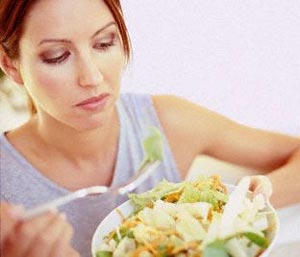Diverticulitis Diet

Diverticulitis is a condition where there is infection in the tiny areas of weakness in the large intestine. Feces can get stuck in these weak pouches (diverticulum) and lead to inflammation and infection. This condition usually affects people over the age of 60 years. Bleeding may be noticed in acute cases of diverticulitis. Increasing cases of diverticulitis is attributed to low-fiber diets, especially usage of refined flour.
When a patient is suffering from diverticulitis, a low-fiber and clear liquid diet is usually recommended. A high fiber diet helps in keeping diverticulitis at bay. Fresh vegetables, fruits and whole grains make for high fiber content. Drinking plenty of water will help prevent constipation. Peruse this informative guide on diverticulitis diet.
High fiber Diverticulitis diet
The developed nations seem to have more instances of diverticulitis. This can be attributed to low-fiber diets and inadequate consumption of plant products. Dietary fiber from plant produce and complex starches of cereals and roots can keep constipation at bay. Resulting constipation lays pressure in the colon leading to bulging in the weak areas.
An intake of 20 - 35 grams of fiber a day is the recommended intake by the American Dietetic Association. Build dietary fiber into your routine gradually lest you land up with abdominal bloating, gas and cramps. A gradual increase allows the natural bacteria in the digestive tract to respond to the change.
Those suffering from severe symptoms of diverticulitis might need to first go on a liquid diet including plenty of water, fruit juice and broth. Then gradually regular food can be introduced. To promote healing of the diverticulum:
1. Resolve nutritional deficiencies.
2. Consider probiotics for good intestinal bacteria.
3. Resolve constipation issues
Tackling diverticulitis
- Increase fiber content in food gradually
- Drink lots of water to prevent constipation
- Do not strain too much when constipated
- Reduce spices, fats and some rich sauces.
- Use a fiber supplement if you are unable to consume large amounts of fiber in the diet
- Moderate exercise complements the high fiber diet to treat diverticulitis.
Fiber in diverticulitis diet
- Get fiber into your breakfast with bran cereals.
- Avoid refined flour breads and instead opt for whole grain breads
- Consume fruits such as apples (with skin), peaches, bananas, oranges, pears and berries
- Eat plenty of legumes, beans, peas and lentils
- Opt for brown rice, whole-wheat pasta and barley
- Snack on whole-grain crackers, bran flakes, pearled barley
- Add wheat bran to salads, casseroles and baked goodies
- Consume vegetables such as carrots, broccoli, asparagus and salad greens
Some are of the opinion that seeds and nuts might get caught in the diverticulum. Thus sesame seeds, poppy seeds and caraway seeds are not recommended.
Top of the Page: Diverticulitis Diet
Tags:#Diverticulitis Diet

Therapeutic Lifestyle Changes Diet
Intermittent Fasting Plan
Flexitarian Diet
Dukan Diet Plan
Diet Plateau
High Protein Diet
Elimination Diet
Raw Food Diet
Paleo Diet
Liver Cleansing Diet
Intermittent Fasting Diet
Low Fat Low Cholesterol Diet
Low Carb Diet
Vegan Diet Plan
Hay Diet
Sacred Heart Diet
Heart Attack Diet
Diet after Gastric Bypass
RICE Diet
Gluten Free Diet
Acid Reflux Diet
Detox Diet
Sonoma Diet
Glycemic Index Diet
Montignac Diet
Diabetic Diet Plan
Healthy Breastfeeding Diet
Negative Calorie Diet
Fad Diet
Blood Group Diet
Diverticulitis Diet
DASH Diet
Ornish Diet
3 Day Diet Strategy
Ketogenic Diet
Zone Diet Plan
Anti Aging Diet
South Beach Diet
Gall Bladder Diet
Low Cholesterol Diet
Low Sodium Diet
Diet and Kidney Disease
Scarsdale Diet Plan
Macrobiotic Diet
Osteoarthritis Diet
Depression Diet Plan
Migraine Diet
Restricted Salt Diet
Gout Diet
Rotation Diet
Diet Cancer Patient
Ways to better Health

Boost Metabolism
BMI Calculator
Low Fat Dessert
Whey Protein
Diet and Fitness
Fitness Exercise Articles
Cardio Workout
Aerobics
Yoga
Body Toning
Top of the Page: Diverticulitis Diet
Popularity Index: 101,555

